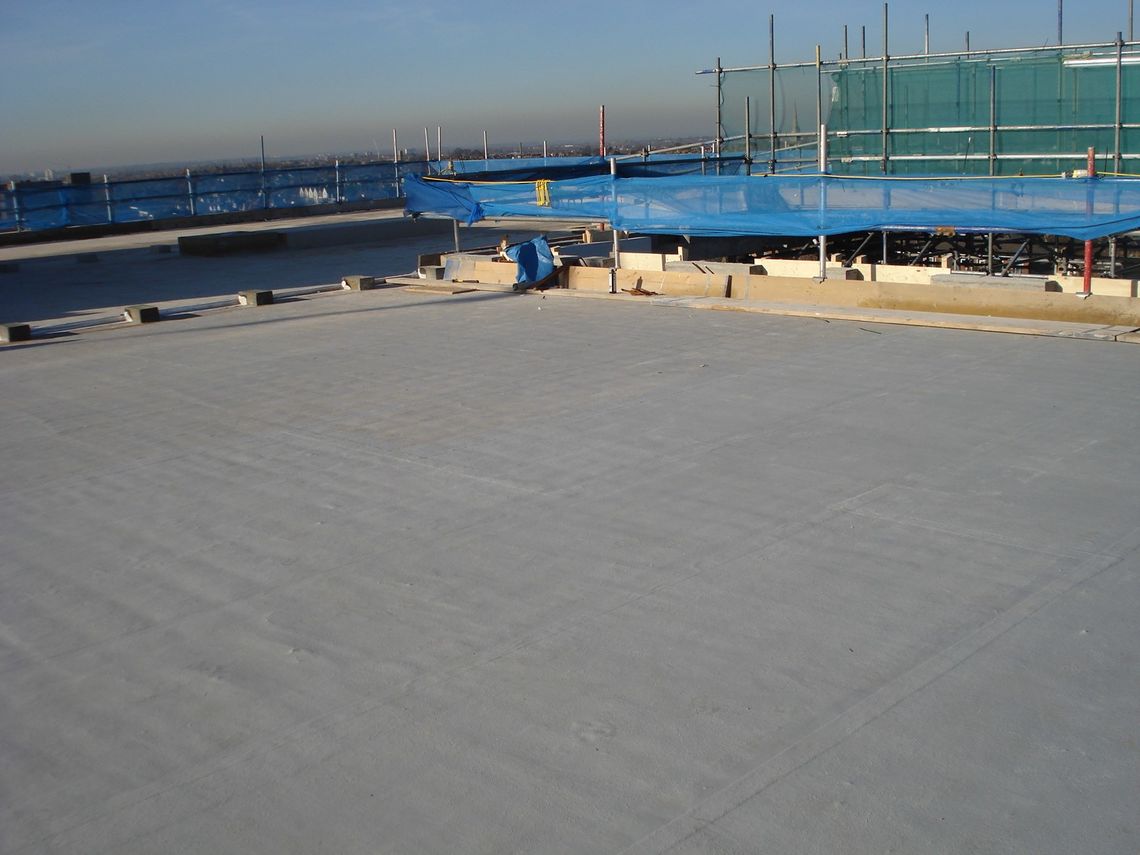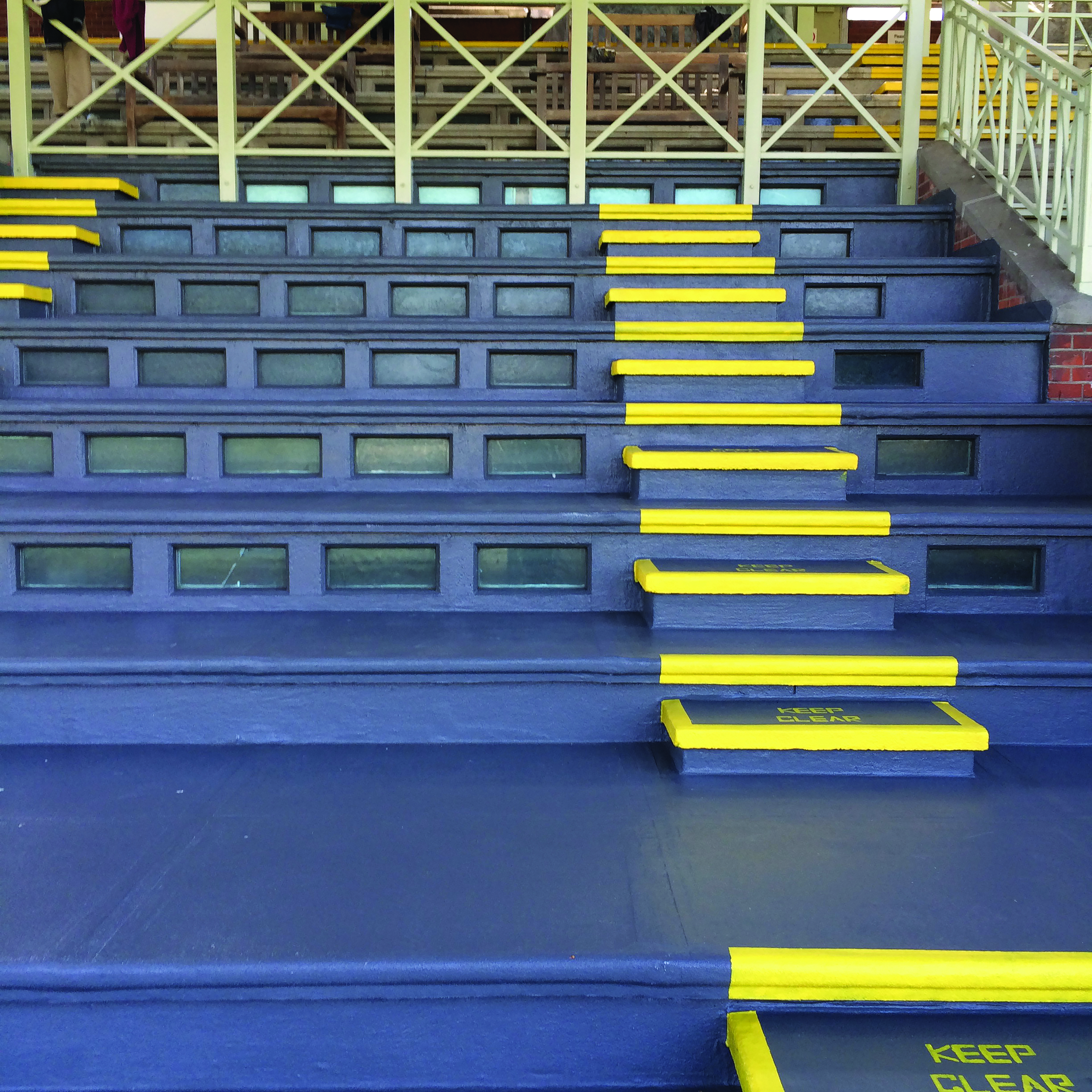WIDOPAN News
The Evolution Of Waterproofing Materials
Date Published: July 10, 2022

The need to protect ourselves from the elements and keep things dry has been important to humans throughout history.
In the 21st century, we have progressed to using innovative products and systems such as cold applied liquid waterproofing.
But how did we get to this point, and what came before?
Natural Waterproofing Solutions
The first liquid material used for waterproofing would have been natural bitumen.
The use of natural bitumen for waterproofing dates all the way back to at least the fifth millennium BC.
As societies evolved, uses for bitumen included mortar, embalming bodies and, as time went on, waterproofing ships. In the early 1800s, bitumen mixed with substrates such as sand also began to be used as waterproofing for roofs.
From the middle of the 1800s, roof waterproofing was extensively made from natural bitumen.
But it wasn’t until the early 1900s that bitumen-based waterproofing products were produced on a large scale for general sale.
The Introduction Of New Waterproofing Materials
In the 1940s, rubber technology was used for the first time to make coatings.
A robust waterproofing membrane was created with the addition of reinforcing fibres. Two decades later, in the 1960s and 70s, acrylics became a more familiar material used in waterproofing products.
The emergence of sheet membranes had begun and would be the main product in waterproofing roofs for years to come.
In 1975 the first BBA Certificate for the application of liquid systems on roofs was issued. Liquid-applied coatings were now shown to provide durable, high-quality roofing solutions.
Throughout the 1980s and 1990s, the roofing industry moved away from bituminous products and used other materials like acrylic and rubber.
In 1996 the first 25-year warranty systems were offered to the roofing industry for liquid applied systems. This demonstrated the durability and reliability of liquid roofing systems.
As a result, it signalled the rise of a new system and the end of complete reliance on sheet membranes.
Waterproofing In The 21st Century
Since the turn of the millennium, Europe has created guidelines for liquid-applied roof waterproofing systems.
This provided European-wide guidance against which quality liquid roofing systems can be compared. The first BBA Certificate for an entire cold-applied warm roof system was given in 2007, demonstrating the continuous development of this system.
The cold applied liquid waterproofing sector continues to grow and adapt to the conditions it must protect against.
These include advances in wet applications, products that cover areas constantly submerged in water and surfaces requiring UV protection.
Contact one of our team now to learn more about how we can help with your waterproofing projects.




![<div class="icon"><picture><!--[if IE 9]><video style='display: none;'><![endif] --><!--[if IE 9]></video><![endif] --><img src="/application/files/4717/1775/6699/Flat_Roofs_-_WIDOPAN.svg" alt="Flat Roofs - WIDOPAN.svg" class="content-editor-image-left" height="30" style="float: left;" width="28" /></picture></div>
<div class="icon-text">
<p>Flat Roof</p>
</div>
<div class="icon"><i class="fas fa-location-arrow"></i></div>
<div class="icon-text">Wembley, HA9
<p> </p>
</div>
<div class="icon"><i class="fa fa-calendar"></i></div>
<div class="icon-text">October 2022
<p> </p>
</div>](/application/files/6416/8683/6705/Brent-House-Wembley-Referbishment-Widopan.jpg)
![<div class="icon"><picture><!--[if IE 9]><video style='display: none;'><![endif] --><!--[if IE 9]></video><![endif] --><img src="/application/files/4717/1775/6699/Flat_Roofs_-_WIDOPAN.svg" alt="Flat Roofs - WIDOPAN.svg" class="content-editor-image-left" height="30" style="float: left;" width="28" /></picture></div>
<div class="icon-text">
<p>Flat Roof</p>
</div>
<div class="icon"><i class="fas fa-location-arrow"></i></div>
<div class="icon-text">
<p>London, SE11</p>
</div>
<div class="icon"><i class="fa fa-calendar"></i></div>
<div class="icon-text">
<p>September 2022</p>
</div>](/application/files/1616/8735/3171/Vauxhall-Climbing-Centre-5-scaled.jpg)
![<div class="icon"><picture><!--[if IE 9]><video style='display: none;'><![endif] --><!--[if IE 9]></video><![endif] --><img src="/application/files/4717/1775/6699/Flat_Roofs_-_WIDOPAN.svg" alt="Flat Roofs - WIDOPAN.svg" class="content-editor-image-left" height="30" style="float: left;" width="28" /></picture></div>
<div class="icon-text">
<p>Flat Roof</p>
</div>
<div class="icon"><i class="fas fa-location-arrow"></i></div>
<div class="icon-text">
<p>London</p>
</div>
<div class="icon"><i class="fa fa-calendar"></i></div>
<div class="icon-text">
<p>September 2022</p>
</div>](/application/files/6316/8857/4311/County-Hall-2.jpg)
![<div class="icon"><picture><!--[if IE 9]><video style='display: none;'><![endif] --><!--[if IE 9]></video><![endif] --><img src="/application/files/4717/1775/6699/Flat_Roofs_-_WIDOPAN.svg" alt="Flat Roofs - WIDOPAN.svg" class="content-editor-image-left" height="30" style="float: left;" width="28" /></picture></div>
<div class="icon-text">
<p>Flat Roof</p>
</div>
<div class="icon"><i class="fas fa-location-arrow"></i></div>
<div class="icon-text">
<p>Premier Inn, Cardiff Waterside</p>
</div>
<div class="icon"><i class="fa fa-calendar"></i></div>
<div class="icon-text">
<p>January 2022</p>
</div>](/application/files/9116/8864/6522/Premier-Inn-Cardiff-Waterside-1.jpg)
![<div class="icon"><picture><!--[if IE 9]><video style='display: none;'><![endif] --><!--[if IE 9]></video><![endif] --><img src="/application/files/4717/1775/6699/Flat_Roofs_-_WIDOPAN.svg" alt="Flat Roofs - WIDOPAN.svg" class="content-editor-image-left" height="30" style="float: left;" width="28" /></picture></div>
<div class="icon-text">
<p>Flat Roof, Podium,</p>
</div>
<div class="icon"><i class="fas fa-location-arrow"></i></div>
<div class="icon-text">
<p>Barnes Village, Cheadle</p>
</div>
<div class="icon"><i class="fa fa-calendar"></i></div>
<div class="icon-text">
<p>January 2020</p>
</div>](/application/files/3016/8864/5647/Millbrook-Park-Taylor-Wimpey.png)
![<div class="icon"><picture><!--[if IE 9]><video style='display: none;'><![endif] --><!--[if IE 9]></video><![endif] --><img src="/application/files/7116/8311/7125/Green_Roof_Applications_by_Widopan.svg" alt="Green Roof Applications by Widopan.svg" class="content-editor-image-left" style="float: left;" height="24" /></picture></div>
<div class="icon-text">
<p>Green Roof, Flat Roof</p>
</div>
<div class="icon"><i class="fas fa-location-arrow"></i></div>
<div class="icon-text">
<p>London, E2</p>
</div>
<div class="icon"><i class="fa fa-calendar"></i></div>
<div class="icon-text">
<p>March 2018</p>
</div>](/application/files/3517/2787/8494/volcano-house.webp)
![<div class="icon"><picture><!--[if IE 9]><video style='display: none;'><![endif] --><!--[if IE 9]></video><![endif] --><img src="/application/files/4717/1775/6699/Flat_Roofs_-_WIDOPAN.svg" alt="Flat Roofs - WIDOPAN.svg" class="content-editor-image-left" height="30" style="float: left;" width="28" /></picture></div>
<div class="icon-text">
<p>Flat Roof, New Build</p>
</div>
<div class="icon"><i class="fas fa-location-arrow"></i></div>
<div class="icon-text">
<p>Millbrook Park, Mill Hill, London</p>
</div>
<div class="icon"><i class="fa fa-calendar"></i></div>
<div class="icon-text">
<p>January 2017</p>
</div>](/application/files/4116/8864/4346/Barnes-Village-Cheadle.jpg)
![<div class="icon"><picture><!--[if IE 9]><video style='display: none;'><![endif] --><!--[if IE 9]></video><![endif] --><img src="/application/files/4717/1775/6699/Flat_Roofs_-_WIDOPAN.svg" alt="Flat Roofs - WIDOPAN.svg" class="content-editor-image-left" height="30" style="float: left;" width="28" /></picture></div>
<div class="icon-text">
<p>Flat Roof, New Builds</p>
</div>
<div class="icon"><i class="fas fa-location-arrow"></i></div>
<div class="icon-text">
<p>Stratford, East London</p>
</div>
<div class="icon"><i class="fa fa-calendar"></i></div>
<div class="icon-text">
<p>July 2012</p>
</div>](/application/files/2416/8864/2641/EastVillage1.jpg)
